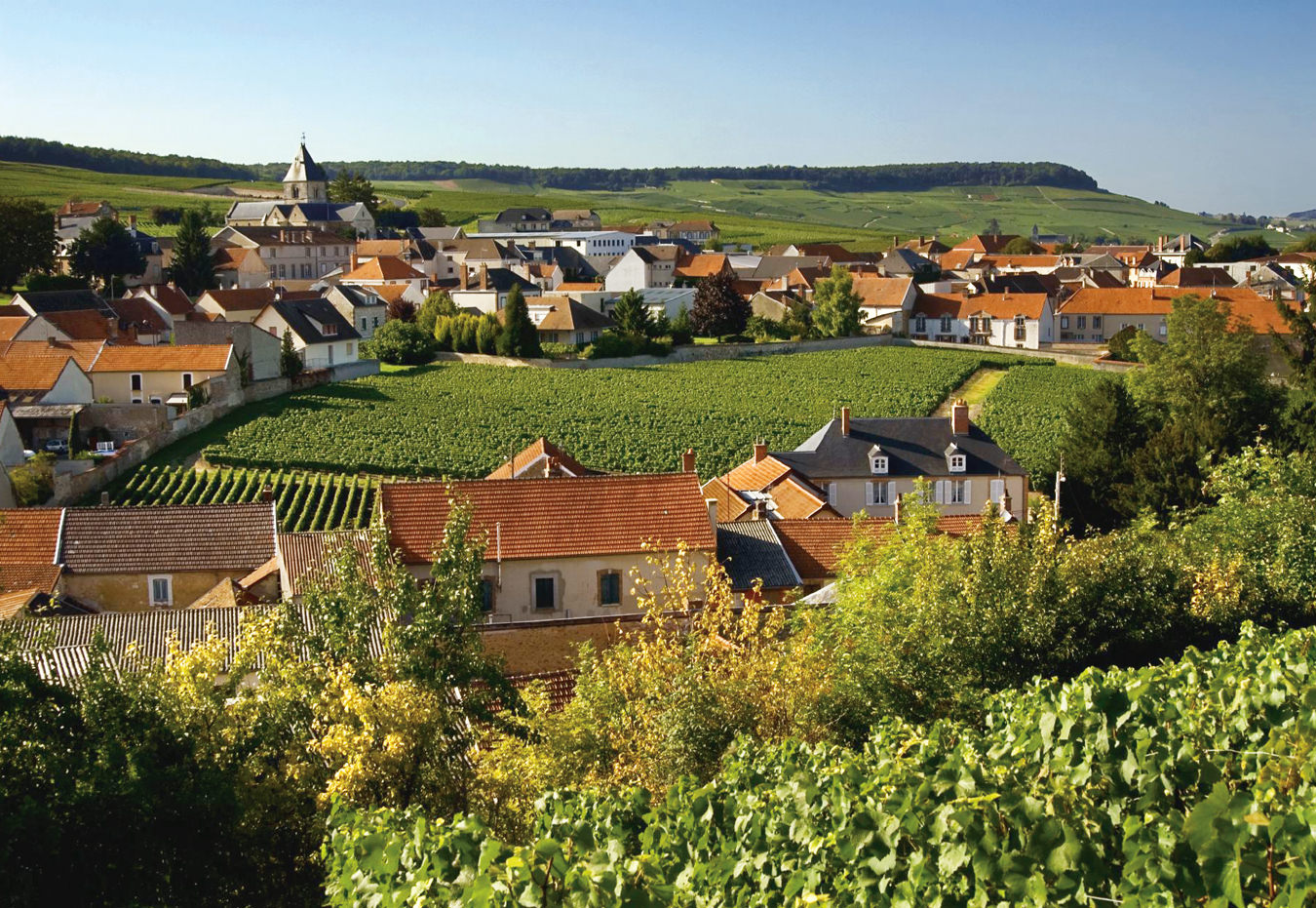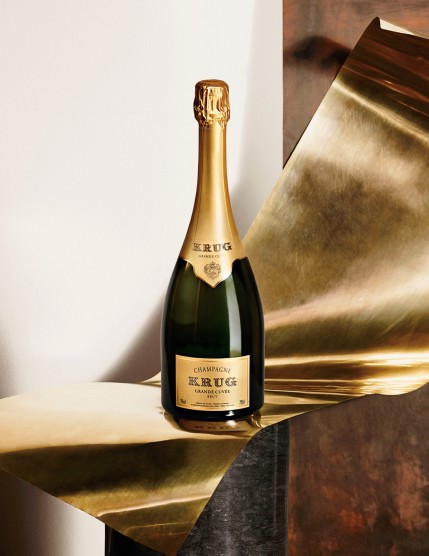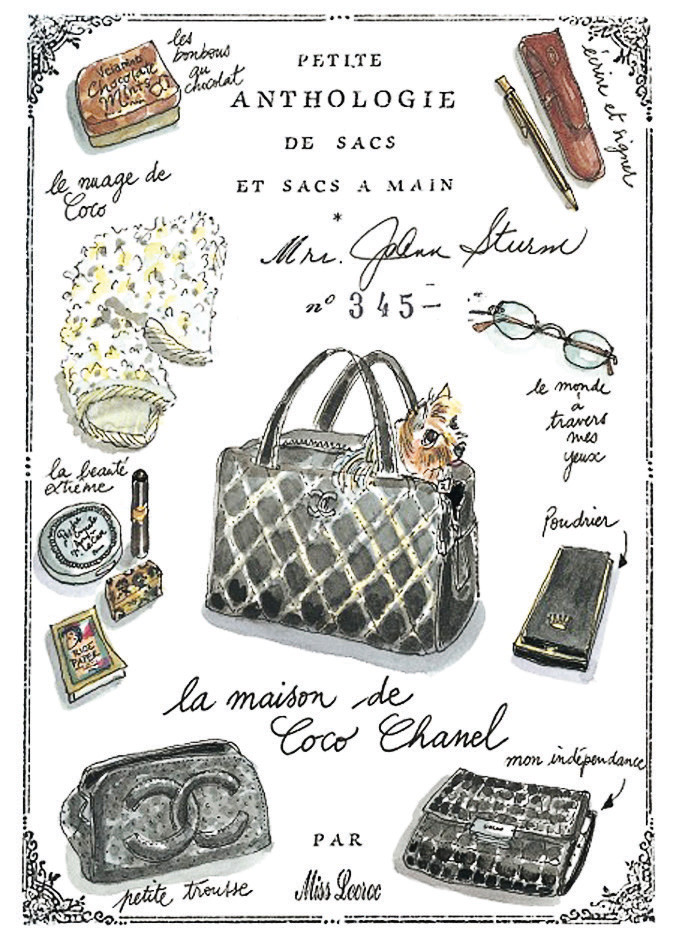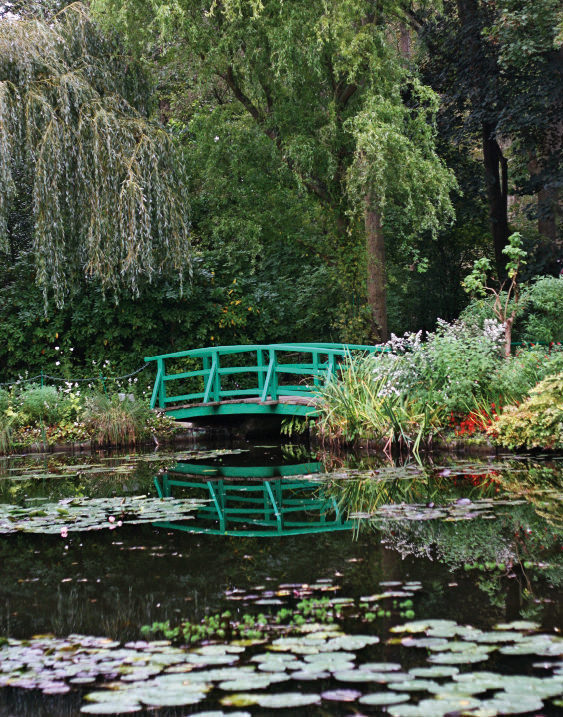Champagne Krug
A superlative sparkling wine.

There is a perception about champagne that has placed it in the celebratory corner. We pop it on New Year’s, births and birthdays, weddings and divorces, and spray each other with it when we win major championships—but we don’t drink (enough of) it. Champagne is the ultimate celebratory tipple, yet this limited role obscures a fundamental point: champagne is a wine and should be embraced as wine, uncorked as routinely as cabernets and chardonnays in all seasons.
For Olivier Krug, scion of the Krug dynasty, an element of enjoying champagne has been put to risk by a generation too immersed in technical details. “I do not mean that we are not paying attention to where the wine is coming from,” he says, detailing the house’s meticulous policy of sourcing grapes from individual plots and its complex blending process for Krug Grande Cuvée. But, he says, we should be drinking champagne as a social pleasure. “I am not going to describe the thousands of words that we could use to talk about Krug,” says the endearingly enthusiastic Frenchman. “Better to drink.”
As the sixth generation of the family to oversee the prestige cuvée house, Olivier is de facto champagne royalty. He is also blessed with being a great communicator; he travels the world pulling corks and spreading the Krugist gospel. In the 1990s, he turned Japan into one of Krug’s most profitable markets. Though the maison sits under the wing of Louis Vuitton Moët Hennessy, Olivier is the living legend of Krug. “I cannot remember when I first tasted Krug,” he says—amusing, because, in accordance with Krug family tradition, “I’d just been born and my mother wet my lips with champagne.”
Since its founding in 1843, the House of Krug has focused on making a non-vintage champagne that not only embodies the very best from Champagne’s various regions, but also includes wines from a combination of the most outstanding harvests, rather than just from a single year. For a winemaking region known for its vintage champagnes, this was a unique concept, and since has continued for over 170 years.
“I believe we are the only luxury maison to vinify each plot separately,” says Olivier of the plot-by-plot approach. Maison Krug harvests somewhere between 250 and 300 vineyards every year; roughly 30 per cent are owned by the house, with the remainder controlled by plot-based contracts with farmers. Maison Krug’s chef de cave, Eric Lebel (hired by Olivier’s father and with the maison for 17 years), works with growers to harvest their grapes, then carefully vinifies more than 250 different plots each year. During harvest, he is known to drive 5,000 kilometres in Champagne visiting each and every Krug plot. “There should be no hierarchy in our champagne,” Krug’s founder, Joseph Krug, emphatically stated. Instead, he wanted only the most individualistic wines to be used for his champagnes; and so Lebel doesn’t look for the best grapes but for the most expressive grapes. Maison Krug captures the essence of each unique plot as an individual wine and respects its individuality as the blending decisions are made.
This is no easy task for Lebel and Krug’s winemaker, Julie Cavil, who together must select the best of approximately 250 different wines annually, in addition to over 150 reserve wines from Krug’s cellars, just to compose each year’s Grande Cuvée blend. Cavil, who joined the House of Krug in 2006, likens the individualistic approach to ratatouille. “You know, the French dish?” she asks. “Each vegetable needs separate time of cooking, different temperatures, different oils, to reach the optimum, and then you put them together. Each is at its optimum before mixing. Each wine is its own vegetable and thus the small casks for each. You get a not-so-good ratatouille when all the raw vegetables are cooked together.”
When Olivier began working at the champagne house that bears his name, his grandfather gave him a worn, leather-bound journal. The notebook, handwritten by Joseph Krug, includes the guiding principles of the House of Krug: to create two champagnes, one vintage and one multi-vintage (Maison Krug uses this term rather than “non-vintage”). Joseph Krug prioritized the production of a non-vintage champagne before a vintage—a revolutionary aspect. The cuvée he called Champagne No. 1 is today called Grande Cuvée, a complex assemblage of 195 wines from at least 10 different years and all three champagne grape varieties (chardonnay, pinot noir, and pinot meunier). Then it is aged for seven years. Although Krug now produces five prestige cuvées—a rosé and four other celebrated vintages—it is the Grande Cuvée that continues to epitomize Joseph Krug’s original vision of a superlative multi-vintage champagne year after year. “I am going to create a champagne that goes beyond the influence of vintage,” wrote Olivier’s great-great-great-grandfather, “a champagne that gives in one glass the very best that champagne can give.”
“When you love, you don’t calculate,” says Olivier Krug of how much champagne he drinks.
A succession of tastings that begin with Lebel in the fields continues with five others, the designated tasting panel, and from October to mid-March each year about 350 wines are tasted blindly before arriving at the final blend for Grande Cuvée. It is rumoured to have been said: “If Grande Cuvée is a non-vintage, then the Pope is just a priest and a Rolls-Royce is just a car.”
Joseph Krug’s notebook has returned to the heart of the maison where it has had an especially transformative effect under Krug’s Venezuelan-born CEO, Margareth Henriquez, who took the helm at the House of Krug in 2009. For nearly 20 years, Olivier had kept the diary in a wooden box seemingly random in his office. “There is a history to this house,” says Henriquez, “and I wanted to understand the people, the family.” For nearly two years, Henriquez immersed herself in the history of Krug—digging and discovering, reading letters and materials, and working with historians. “I needed to understand who we were. I needed to know the script so I knew what it was I was going to tell.”
“Thanks to Maggie [Henriquez] we have returned to our roots with a renewed conviction,” says Olivier. Henriquez is a forceful champion for Krug, and has done much to lead the maison toward becoming more transparent about what goes into a particular bottle of its champagne. “Some people felt that maybe we were hiding something,” says Olivier, and so at Henriquez’s insistence, Krug releases carry a six-digit code on the back of the bottle, known as the Krug ID. Whether online or via a smartphone app, you’re invited to enter the code to learn the makeup of that particular bottling, including, in the case of Grand Cuvée, the base vintage of the blend, the number of vintages used in the blend, and the oldest such vintage, as well as when it was disgorged. “You have access to the whole story,” says Olivier, “the cake, the icing, and the super icing.”
Krug makes an average of only 450,000 bottles a year—roughly 1 per cent of the world’s champagne. Its devotees, who are called Krugists, have included Ernest Hemingway, Sir Alec Guinness, Naomi Campbell, Madonna, and the late Queen Elizabeth the Queen Mother, who used to sneak in bottles whenever she was in the hospital.
Each new release of Grande Cuvée is not identical—it’s not meant to be. “Each result is a distinctly complex bouquet that does not waver from exception,” says Olivier. The character of the wine is the same—to convey a wholeness and a generosity of expression—but the folks at Krug are quite clear they have no intention of making every new batch of Grande Cuvée taste like the last. “We don’t work to a rulebook or formula, and we want to celebrate the differences from year to year,” adds Henriquez.
A first sip of Krug is an explosion of flavours. It fills your mouth—it is very rich, very intense, and very fresh. Krug is a champagne for which you don’t need to be a specialist as you know the best expression is in the glass. There really is no other champagne that gives such a full spectrum in just one sip.
“When you love, you don’t calculate,” says Olivier of how much Krug he drinks; he insists that people should drink champagne purely for pleasure, not to show off knowledge or affluence. Having spent 48 years honing his tastes, Olivier calls it a “crime” to drink champagne from a flute. “Keep the flute for good gazpachos or sorbets,” he suggests.
At Krug, they use a glass called Le Joseph, designed especially by Riedel and with a wider mouth. Says Henriquez: “A flute limits the transmission of the bouquet. It’s like listening to a concert with ear plugs.”
Every bottle of Krug has a story and is best served spontaneously, “with the right glass and the right people,” avows Olivier. After all, with wine, so much of it is about the personal experience—the where and the with whom all add up to create, in the best cases, something special.





